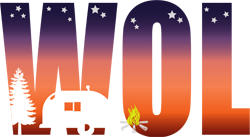Southern Delta Aquariids & Alpha Capricornids
Southern California stargazers, mark your calendars! Tomorrow brings a fantastic opportunity to witness two meteor showers at once: the Southern Delta Aquariids (SDA) and the Alpha Capricornids. And this year, the viewing conditions are looking exceptionally good!
These two showers are set to peak tomorrow around July 29th and 30th into the pre-dawn hours of July 31st, 2025. While the Southern Delta Aquariids are known for producing more numerous but fainter meteors, the Alpha Capricornids, though less frequent, are famous for their brilliant, slow-moving fireballs. Imagine seeing a mix of both, adding up to potentially 25 meteors an hour in a dark sky!
The best news for 2025? The moon will be a slim waxing crescent and will set early, leaving the crucial after-midnight hours completely dark. This means minimal lunar interference, which is perfect for spotting even the fainter shooting stars. You've heard about the hype and anticipation for this can't miss event, and now you need all the info and tips! RV Rentals Way of Life has you covered!
When to Watch: For both showers, the prime viewing window will be after midnight, typically between 2:00 AM and dawn (around 5:30 AM PDT) on both July 30th and 31st (PDT). This is when their radiant points are highest in the sky.
For the SDA, the radiant will be highest around 3:00 AM PDT.
For the Alpha Capricornids, the radiant will be highest around 1:00 AM PDT.
Where to Go: To truly experience the spectacle, you'll need to escape the city lights. Pick up your RV and head down to known dark-sky locations in Southern California such as:
Anza-Borrego Desert State Park: This is an International Dark Sky Park and one of the best options in Southern California.
Joshua Tree National Park: Another excellent dark sky location, though it can be popular. But don't let that deter you! This is a wonderful opportunity to build a community of like-minded nature lovers!
Mojave National Preserve: offers vast, remote, and dry desert skies with an amazing scenic landscape.
Mount Pinos/Frazier Park area: Known for its dark skies and popular with amateur astronomers for its high altitude, low light pollution, and good atmospheric conditions with relatively easy access!
Desert areas east of Palm Springs/Indio: As you head further into the desert, away from the Coachella Valley, skies can get quite dark.
Death Valley National Park: While a bit of a drive, it offers incredibly dark skies and can be a wonderful destination spot after a scenic summer road trip.
Remote areas within the Cleveland National Forest or San Bernardino National Forest.: Look for remote spots within these forests, away from developed areas and campgrounds that might have lights.
What to Expect:
Southern Delta Aquariids (SDA):
- Rate: At its peak, you might see 15-20 meteors per hour in a very dark sky. From Southern California, with the radiant not directly overhead, you might see closer to 10-14 meteors per hour.
- Characteristics: These meteors tend to be fainter than other major showers like the Perseids. About 5-10% might leave persistent trains (glowing ionized gas trails)
- Radiant: They appear to originate from the constellation Aquarius, which will be in your southern sky.
Alpha Capricornids:
- Rate: This is a less active shower, with rates of 5-10 meteors per hour at peak. From Southern California, you might see around 3 meteors per hour
- Characteristics: What makes them special is that they often produce slow-moving, bright meteors, and sometimes brilliant fireballs (very bright meteors that can be seen even from light-polluted areas).
- Radiant: They appear to originate from the constellation Capricornus, which is right next to Aquarius in the southern sky. You might find it hard to distinguish between an SDA and an Alpha Capricornid meteor based on origin point alone.
Combined Effect: Since both showers peak at the same time and their radiants are close, you could potentially see a combined total of up to 25 meteors per hour in ideal conditions, with a mix of faint and bright streaks.
Tips for the Best Experience:
- Find the Darkest Spot: Use a light pollution map to locate the remotest area possible. Consider the locations we've listed!
- Let Your Eyes Adjust: Give your eyes at least 20-30 minutes in the dark to fully adapt. Avoid looking at your phone and just be present in the moment! :)
- Get Comfortable: Bring a reclining chair or a picnic blanket to lie down on. Set up the outdoor patio of your RV. Bring snacks and drinks and make it a full event! Patience is key!
- Dress Warmly!: Even in late July, desert nights can get cool, especially after midnight.
- Look South: While meteors can appear anywhere in the sky, they will seem to radiate from the constellations Aquarius and Capricornus in the southern sky.
- Don't miss this chance to witness some celestial fireworks!
Gather with your closest friends and enjoy the show! These two showers offer a nice warm-up before the Perseids, which will unfortunately be hampered by moonlight this year. So take advantage of this beautiful spectacle and create a summer memory to last a lifetime!
Interested in heading to one of the remote campsites mentioned and want to make your meteor shower viewing experience even sweeter?
Hurry and rent a spacious RV with RV Rentals Way of Life and take the fun with you!
WE OFFER COMPETITIVE RATES AND DISCOUNTS!
Call or text 951-691-1244
or check out our full inventory at RVRentalsWayofLife.com

